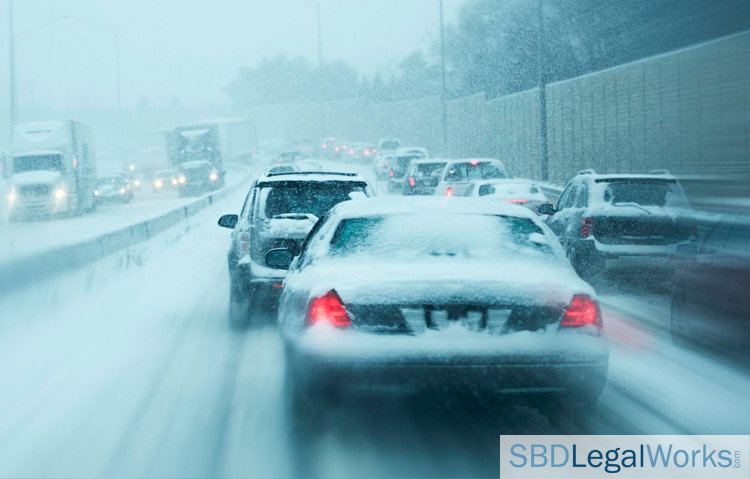
‘Tis the season for many things, and one of those is winter-weather-related work accidents.
Your occupation determines how much exposure you have to the winter weather, but we’re all exposed to it to some degree. You may just be parking and walking into your office building. Or you may spend 80 to 90 percent of your work day in the elements. Either way, there are precautions that we should take to avoid accidents brought on by the snow and ice.
Slips, trips, and falls
Firstly, employers have to make sure that they’ve taken the necessary precautions to make their property as safe for their employees as possible. One of these precautions is de-icing parking areas. Depending on the severity, this could mean putting down salts or hiring someone to plow. This ice and snow removal also goes for walkways and break areas for employees.
Another precaution to think about is indoor mats for the snow and ice that gets tramped inside and will melt and create puddles. Make sure you have enough rugs and mats at all entrances.
Employees should make sure to be observant of their surroundings, from ice on the ground to signs that have been posted to warn you away from certain icy areas. This is also not the time to try to carry heavy loads, if you can help it. And last, but not least, wear proper winter weather shoes with proper traction.
Frostbite and hypothermia
If you’re working out in the elements for most of your work day, your knowledge about the signs and symptoms of frostbite and hypothermia is crucial. Being cold doesn’t seem dangerous, but prolonged exposure to it can be fatal. Here are a few symptoms of each that you should not let sneak up on you.
Frostbite Symptoms
- Very cold skin that becomes numb, pale, and hard
- Swelling or blisters
- Muscle or joint stiffness
Hypothermia Symptoms
- Uncontrolled shivering or shaking
- Slurred speech
- Confusion or drowsiness
- Slower heartbeat and breathing
- Weak pulse
Employers and employees must work together to make sure that employees have all clothing and gear needed to stay as warm and safe as possible. Employees should also monitor each other out in the field for signs of cold stress.
Keep reading on our blog for more helpful tips on avoiding winter weather accidents in and out of the workplace.